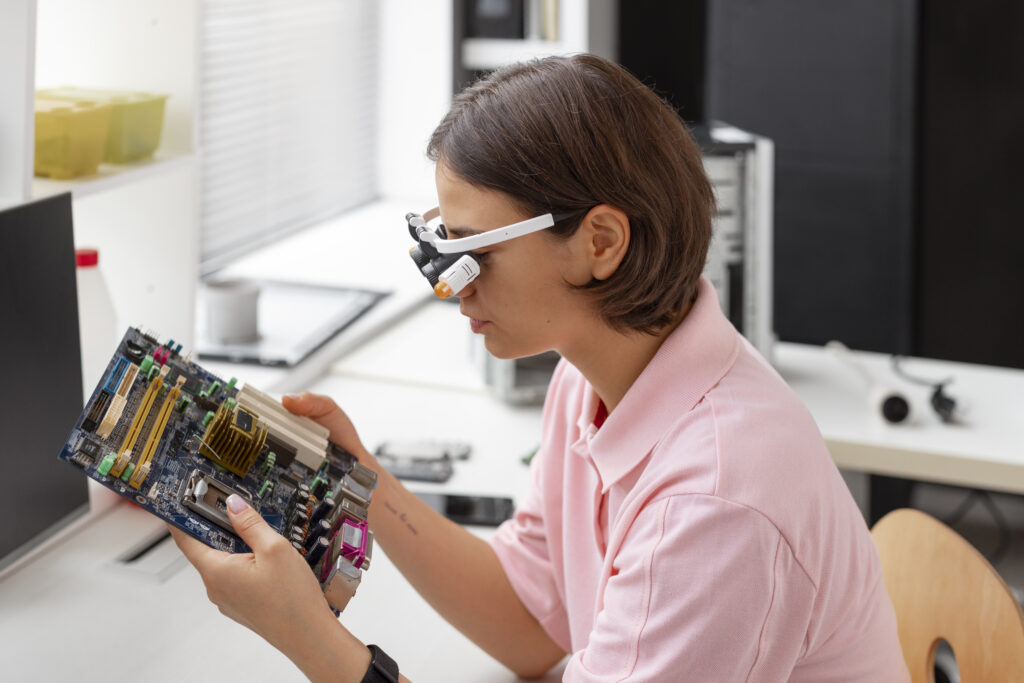Signal Integrity and Smart Design The Future of PCB Engineering
In today’s fast-paced technological landscape, the backbone of virtually every electronic device lies in its printed circuit boards (PCBs). These intricate layers of copper and resin are not just mere pathways for electricity; they embody a world where innovation meets precision. From smartphones to advanced robotics, PCBs play a critical role in ensuring reliable performance. As devices become more compact and powerful, the demand for high-quality PCB fabrication and assembly rises. This is where technical expertise shines through, bringing forth advanced solutions such as Rigid-Flex and High Frequency PCBs. Whether it’s enabling seamless connectivity in telecommunications or enhancing functionality in robotic systems, these specialized boards redefine what’s possible.
Dive into the fascinating world of PCB technology that underpins modern electronics. Discover how quality matters and why it can make all the difference when we talk about reliability and efficiency in our gadgets.
The Importance of Quality PCBs in Electronic Devices and Systems
Quality Printed circuit board transformer are the backbone of modern electronic devices and systems. They facilitate seamless connectivity, ensuring that signals travel efficiently between components. When a PCB is crafted with precision, it enhances the overall performance of electronic products. Defective or poorly designed PCBs can lead to numerous issues, including signal loss and overheating. These problems not only affect functionality but can also jeopardize user safety.
In industries where reliability is paramount like telecommunications and robotics the stakes are even higher. A malfunctioning PCB could disrupt communication networks or hinder robotic operations, leading to costly downtimes. Investing in high-quality PCBs translates directly into better durability and efficiency for end devices. As technology continues to advance, the demand for superior quality PCBs will only grow more critical in shaping future innovations.
Technical Expertise in PCB Fabrication and Assembly
Technical expertise in PCB fabrication and assembly is crucial for creating reliable electronic devices. It encompasses a blend of engineering knowledge, hands-on skills, and an understanding of intricate design specifications. Highly trained professionals utilize sophisticated software for designing circuit layouts. These tools ensure precise placement of components on the board, optimizing both functionality and performance.
The manufacturing process requires meticulous attention to detail. This includes selecting appropriate materials that can withstand various environmental conditions while maintaining signal integrity. Advanced techniques like surface mount technology (SMT) come into play during assembly. SMT allows for greater component density, which is essential in modern electronics where space is often limited.
Quality control measures are embedded throughout each step to guarantee adherence to stringent industry standards. This commitment reduces defects, enhancing product longevity and reliability in demanding applications such as telecommunications and robotics.
Advanced PCB Solutions: Rigid-Flex and High Frequency PCBs
Advanced PCB solutions are reshaping the landscape of modern electronics. Rigid-Flex PCBs combine the benefits of both rigid and flexible circuits, allowing for intricate designs with space-saving potential. This adaptability makes them ideal for compact devices where traditional boards simply can’t fit. High Frequency PCBs, on the other hand, cater to industries requiring rapid signal transmission. These boards are meticulously engineered to minimize losses and maintain integrity at elevated frequencies. They’re crucial in applications like telecommunications, where performance is non-negotiable.
Both types offer exceptional durability and reliability under varying environmental conditions. Their advanced manufacturing processes ensure precision that meets stringent industry standards while pushing the boundaries of what’s possible in electronic design. The integration of these technologies enhances functionality without compromising size or performance, making them indispensable in cutting-edge applications across multiple sectors.
Applications of Rigid-Flex and High Frequency PCBs in Telecommunications Industry
Rigid-Flex and High Frequency PCBs are revolutionizing the telecommunications industry. Their unique construction allows for compact designs that fit seamlessly into modern devices. Telecommunications equipment demands exceptional performance. Rigid-Flex PCBs excel in this area by offering flexibility without sacrificing durability. They can withstand harsh conditions, making them ideal for base stations and mobile devices.
High Frequency PCBs are engineered to handle increased data transfer rates with minimal signal loss. This is crucial for applications like 5G networks, where speed and reliability are paramount. These advanced circuit boards support a variety of components such as antennas and amplifiers. Their integration leads to more efficient systems capable of meeting the ever-growing demand for connectivity. Moreover, Rigid-Flex technology reduces assembly times and simplifies manufacturing processes. This efficiency translates into faster deployment of new telecommunications solutions in a competitive landscape.
Applications of Rigid-Flex and High Frequency PCBs in Robotics Industry
Rigid-Flex and High Frequency PCBs have become essential in the robotics industry. Their unique design allows for compactness without sacrificing performance. Robots require reliable connections to function effectively. These advanced PCBs provide flexibility that traditional boards cannot achieve, enabling intricate designs in tight spaces.
High Frequency PCBs enhance signal integrity, crucial for communication between robotic components. This is particularly vital for real-time data processing and remote control operations. Moreover, Rigid-Flex solutions facilitate movement without compromising electrical reliability. They can withstand bending and flexing during operation, making them ideal for dynamic robotic applications.
From autonomous drones to industrial robots, these cutting-edge circuit boards are transforming how machines operate efficiently across various environments.
Benefits of Using Rigid-Flex
Rigid-flex PCBs combine the best of both rigid and flexible circuits. This unique design offers exceptional space-saving capabilities, allowing for more compact electronic devices. Their ability to bend and flex makes them ideal for complex assemblies. They fit seamlessly into intricate designs where traditional PCBs might struggle. Durability is another advantage. Rigid-flex boards withstand environmental stress better than standard options, reducing the likelihood of failure in demanding applications. Cost efficiency comes into play as well. Fewer components mean fewer assembly steps, leading to reduced labor costs and quicker production times.
Conclusion
The journey through the realm of printed circuit board fabrication and assembly highlights the intricate relationship between quality PCBs and their applications. As technology advances, so does the need for innovative solutions like Rigid-Flex and High Frequency PCBs. These advanced designs cater to demanding sectors such as telecommunications and robotics, where reliability can significantly impact performance.


